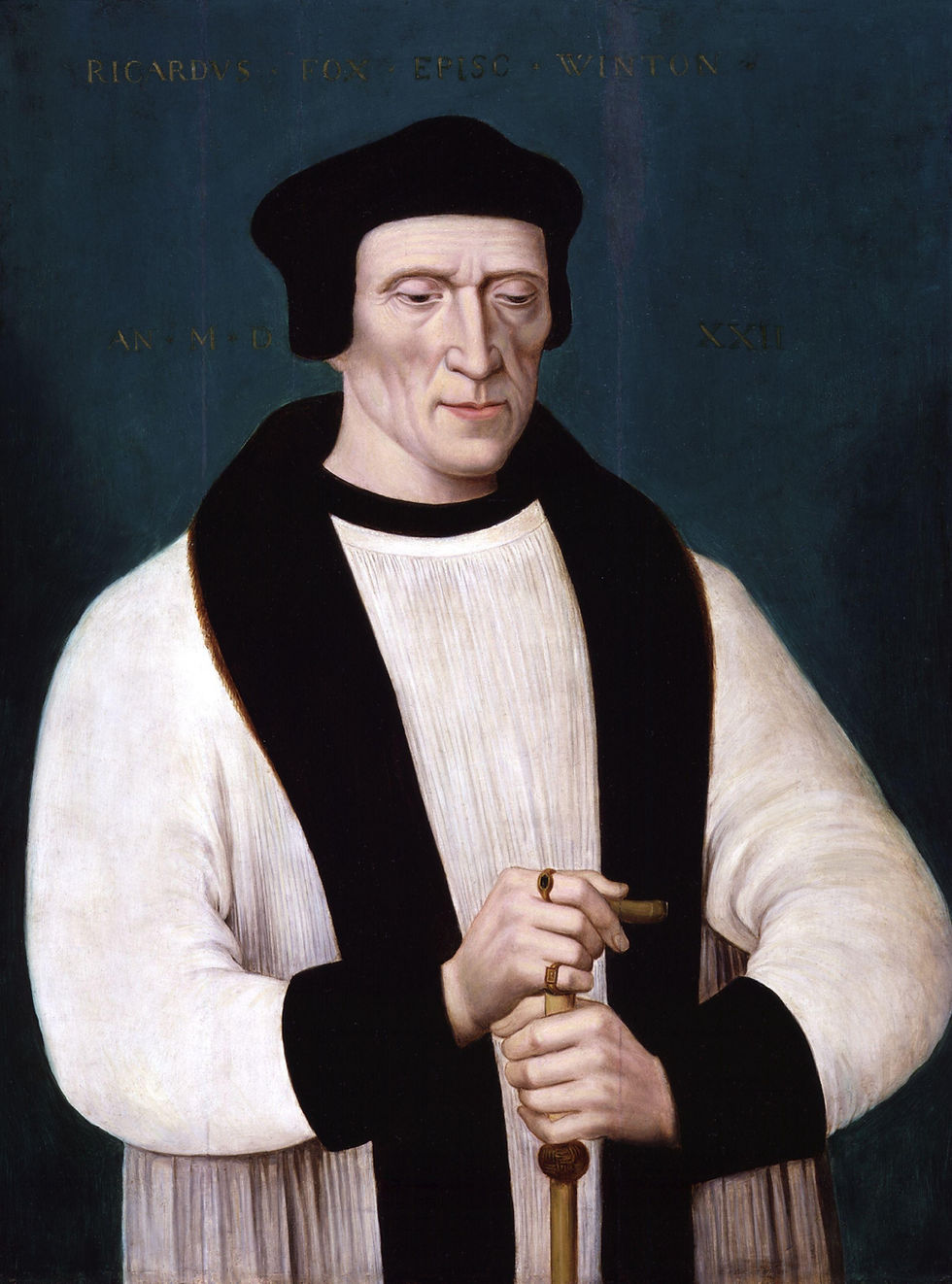VE Day: Camouflage at Farnham Castle
- Gill David
- May 8
- 3 min read
On an autumn afternoon in October 1940 a ‘curious collection’ of about 30 men disembarked from the London train at Farnham station. This group contained the first, and perhaps the most illustrious, students of British military camouflage heading for Farnham Castle where the Camouflage Development and Training Centre had been recently established.
The group was not expecting to be housed in the splendid surroundings of Farnham Castle, but to be billeted in something more akin to barracks rather than in a medieval castle! One of the new arrivals, the surrealist painter and printmaker, Julian Trevelyan, recalled his first impressions:
“What was my surprise then, to be driven up to a venerable Tudor Castle, amongst cedar trees, and to be greeted by a charming young adjutant who apologized profusely for the shortcomings of the staff and the incompleteness of the furniture! … where were my endless rows of sleeping soldiers, and the harsh camp routine that I had come to expect? Certainly, all my conceptions about Army life would have to be quickly revised”
However, the comfort of the Camouflage Team had not been the priority when choosing Farnham Castle as the location for the training school. More important were the opportunities it provided - the old stable block was the perfect space for a workshop, the extensive grounds permitted the placement of camouflage objects, the Farnborough Airfield allowed vital access to assessing their camouflage experiments from the air, and, of course, Farnham’s proximity to the military base at Aldershot was a further bonus.

Director of operations at the Camouflage Camp was Colonel Frederick Beddington, who possessed an unusual combination of skills, being an expert sniper and having a knowledge of art. His brother, Jack, who was head of the Ministry of Information Films Division during the war, was able to help Frederick recruit the 30 candidates who would form this first group who arrived at Farnham Castle in 1940.
In The Castle
It is hard to imagine now what it must have been like at the Castle during those years from 1940 - 1944. Polished boots clattering up Bishop Morley’s grand oak staircase, drill taking place on the cobbled courtyard and men in khaki milling about the medieval Great Hall in between lectures. The Camouflage Team was housed in the west wing of the Castle, while Bishop John MacMillan, resided in the eastern wing. Julian Trevelyan was moved by his idyllic surroundings, describing “days of pearly autumn mornings, particularly beautiful in the wooded precincts of Farnham Castle”.
The students who arrived at Farnham Castle would have been greeted by the distinguished Cambridge zoologist, Hugh Cott, who was also an artist and an expert on camouflage in nature. He was the only scientist within the group. It is hard to imagine the concentration of talent that existed at one moment in our history, all residing under one roof here in Farnham. One of these was the magician, Jasper Maskelyne who employed his wizardry in camouflaging tanks and lorries but also, according to Julian Trevelyan, spent a lot of time entertaining the troops with conjuring tricks!
In the evenings, members of this select group enjoyed a pint or two at The Nelson Arms further down Castle Street, where they also mingled with students from Farnham Art College, and attended productions at Farnham’s Castle Theatre. Farnham Art College graduate Pauline Baynes spent time at Farnham Castle during the war, working as an assistant model- maker, and then moving to the Admiralty, where she was deployed drawing maps and naval charts. Pauline Baynes later used her skills illustrating Tolkien, C.S Lewis and many more books.

Other notable individuals amongst the original group of thirty, was the surrealist painter, historian and poet, Roland Penrose CBE, who was married to the American photographer, Lee Miller (played by Kate Winslet in the 2023 biographical war drama ‘Lee). Penrose, used his skills as an artist as a teacher of camouflage.
Farnham Castle played a very special part in WW2 leading up to VE Day in 1945. Products developed here included the dummy tank, used to great effect during the North African Campaign, machine gun covers, matting to hide newly excavated spoil, and overhead covers for vehicles. Eventually, there were over one hundred people operating from Farnham Castle in the Camouflage Department.
You can visit the Bishop's Palace at Farnham Castle on a guided tour every Wednesday afternoon.




Comments